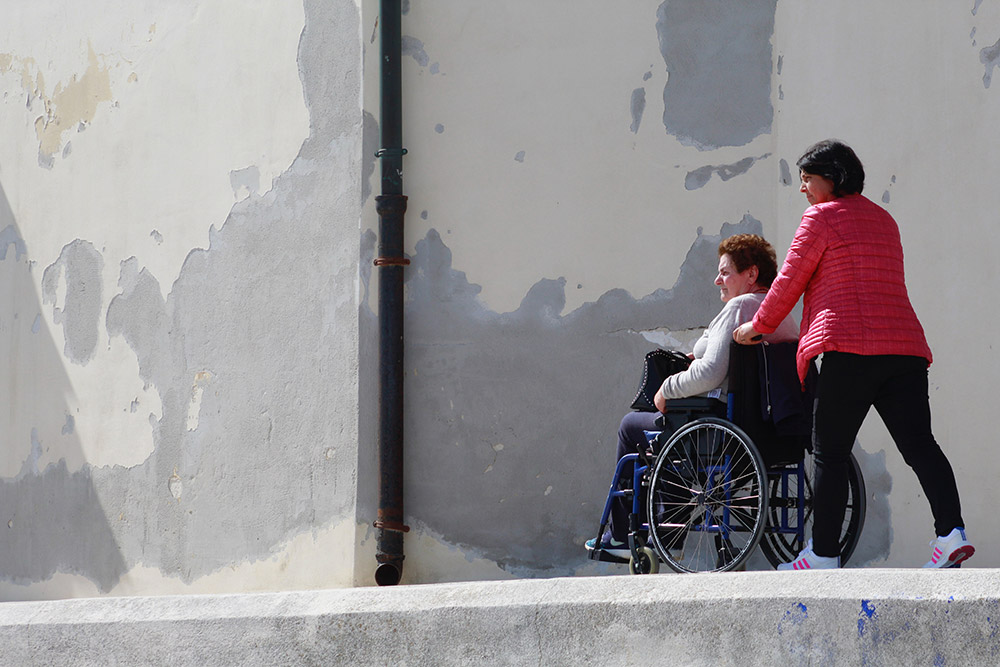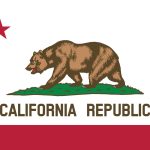Table of Contents
An SSI essential person is someone who lives with an SSI beneficiary and provides essential care in the United States. This could be a child taking care of a parent, or a live-in caretaker. However, there are very strict requirements around the definition of an essential person.
What is an SSI Essential Person?
- Must have been an essential person as of December 1973
- Must be a caregiver
- Must have lived with SSI recipient since December 1973
- Must never have been eligible for SSI benefits
- Must not have been eligible for State assistance in December 1973
An essential person—according to the Department of Social Security—is essentially a caretaker of someone who receives SSI. A deeper understanding of what defines an essential person begins with understanding Social Security in general.
The Social Security Act in 1935 was established to help disabled workers, elderly citizens, and unemployed individuals by providing cash assistance to meet their living expenses.
One of the more well-known components of this overall welfare program is Social Security Insurance, which is paid to individuals over the age of 65 with limited economic resources. Another well-known benefit is Social Security Disability Insurance, which are fixed payments made to qualifying disabled workers who can no longer work.
For many years, the programs of Social Security Insurance (SSI) and Social Security Disability Insurance (SSDI) were administered at a local level by the states. Some states would increase a payment to defray the cost of a qualified caregiver. When the Federal Government took over managing the SSI and SSDI programs in the 1970s, they created a way to facilitate continued payments to these qualified caregivers.
There are very few qualified individuals left who can be considered an SSI Essential Person and receive SSI benefit for coverage. As you will see, the requirements have been set up to phase the idea of an SSI Essential person out of circulation. Nonetheless, if you meet the following requirements, you or your caregiver will still fall into this category.
How to Qualify as an Essential Person
These requirements must be met to qualify as an essential person:
Must Have Been an Essential Person as of December 1973
The Federal Government established the SSI program to take Social Security benefit payment administration over from the states as of January 1974. Anyone qualifying as an SSI essential person would have to have been so already—making the cutoff December of 1973.
Must Be a Caregiver
A caregiver is someone who takes care of an elderly or disabled individual. A caregiver usually will help them with physical tasks such as getting dressed and preparing meals. A caregiver might also help them navigate financial and legal affairs, bring them to appointments, and provide emotional care. A caregiver may or may not be related to the SSI beneficiary or SSDI beneficiary.
You might be wondering if a spouse can be a caregiver. SSI payments are calculated at a single rate or a couples rate. If your spouse is over the age of 65 or disabled, they may already qualify to receive their own Social Security payments, in addition to the fact that they may not be able to provide care. However, it is possible in some states for a spouse to be paid by the SSI as a caregiver from sources like a state supplement.
Must Have Lived With SSI Recipient Since December 1973
Living with an SSI recipient means that their address must be your primary address as well. In most cases, your primary address is where you choose to have your mail delivered, and what you put down on paperwork.
It is possible for an essential person to be absent from the house of an SSI or SSDI beneficiary they care for—if that absence is temporary. If the essential person requires hospitalization or the absence is no longer than 90 days, that absence is considered temporary. The essential person must also intend to return, and facts must support that intention.
Must Never Have Been Eligible For SSI Benefits
An SSI essential person must not themselves be a beneficiary of SSI or SSDI benefits. In any case, if they are receiving those benefits, it would be likely that they are not able to provide a caretaking role for another person. While that might seem obvious, the primary goal of the Federal SSI program in initiating this requirement is to phase essential persons out of the system. At the time of this article, if an essential person was in their late teens as of 1974, they would most likely no longer qualify as an essential person because they are already eligible to receive SSI payments.
Must Not Have Been Eligible for State Assistance in December 1973
State assistance comes in many forms. There are food stamp programs (also known as SNAP benefits) for low-income individuals who need help paying for groceries. There is Medicaid for individuals who do not have medical insurance through work or cannot afford it on their own. There are unemployment insurance programs that help individuals out of work meet their expenses on a temporary basis. Many of these programs are administered at a state level, and if an essential worker was eligible for any of them as of December 1973, they cannot be considered an essential worker.
How Do I Get an SSI Essential Person?

If you can find someone who meets all these requirements, that person can qualify as an SSI essential person. This must be someone who has lived with you since December of 1973, was not eligible for any kind of state benefits at that time, and has never become eligible for SSI benefits of their own accord or as a qualifying spouse. So, to answer this question, one might say that you cannot really get an essential person unless you’ve already been living one.
Can I Replace an SSI Essential Person if I Already Had One?
Yes. In fact, you are allowed to have more than one essential person at one time. If one SSI essential person is no longer qualified to be so, another one can take their place, provided they meet all the requirements.
What is Deeming?
As if the SSI program did not make qualifying to be an essential person difficult enough, an additional application called “deeming” makes the process more difficult. Under normal circumstances, a person’s SSI payment is increased by $392 per essential person, which is intended to defray the cost of that SSI essential person’s living expenses. However, the tradeoff to this supplemental benefit is that the SSI essential person’s resources and wages count against the income limit for the SSI recipient—which can lower (or in extreme cases, eliminate) the monthly benefit they receive.
Deeming also applies to other situations as well, such as determining whether or not the child of a financially solvent parent can receive SSI for children. If a parent lives with a child and has the resources to support them—above the $2,000 limit—then that child will not be able to receive SSI benefits. The situation is similar to that of an SSI essential person in a caretaking role. If they already have the resources to take care of an SSI beneficiary, that beneficiary should not be receiving a monthly cash assistance payment to reduce the burden of age and poverty (according to the Department of Social Security).
Can an SSDI Recipient Have an Essential Person?
No, an essential person does not apply to SSDI recipients. The credit system in place to facilitate SSDI payments makes it so that an individual would have to be employed during the decade before their SSDI benefits kick in. It is extremely unlikely that such an individual would be receiving SSDI benefits since 1974.
An essential person is someone who is a caretaker for a recipient of SSI. Note that SSI is different from SSDI or Social Security Disability Insurance. SSDI is paid to individuals who are no longer able to work because of a disability. SSDI works on a complicated credit system where work hours are accumulated to receive credits that can later be used to achieve eligibility for fixed payments.
By contrast, SSI, or Social Security Insurance, is a program created by the Federal Government during the Great Depression to help unemployed or elderly individuals meet their basic expenses, regardless of their work history. It is funded by a Social Security tax that is taken from the paychecks of employed individuals on a payroll. In most cases, an individual will not need or want to apply to receive SSI benefits until after they are 65—however, they can be received earlier, for individuals who need them.
Defining an Essential Person
The majority of SSI recipients or elderly and/or retired individuals who need Social Security payments to cover their living expenses. In some cases, individuals may have worked with a tax planner to create a stream of unfazed unearned income like a retirement portfolio. These individuals can still receive SSI to supplement their unearned income.
Either way, many of these retired individuals may be in a situation where they need a caretaker to help with physical tasks (such as cooking, cleaning, and shopping) or for mental and emotional support. The classification of an SSI Essential person is meant to provide SSI recipients with extra income to defray the cost of their care, but at the same time, it is structured in such a way to eliminate this classification of persons from the proverbial government payroll (that is, receiving government benefits funded by taxpayers).
For Americans aged 65 and older with limited income and ability to work, Supplemental Security Income is a necessity for survival. Many of these individuals need Social Security benefits to pay their monthly rent, buy groceries, and obtain other goods and services, so they would not want anything or anyone to reduce their payments or jeopardize them—even if that person is essential to their care. It’s important to assess the pros and cons of an essential person, if such a situation is applicable.
An essential person may actually be reducing your benefits, even with the extra money their presence provides. On the other hand, an essential person may supplement your Social Security income. It all depends on your financial situation, and theirs.
It’s important to realize that someone (a loved one or trusted person) can still be a caretaker without having to be an SSI essential person on paper. It’s also important to make sure you are receiving all the additional benefits that are offered in your state, such as Medicaid, the Supplemental Nutrition Assistance Program (food stamps), Veteran’s Benefits, and possibly SSDI in addition to your SSI.
Other SSI Terms
Adult (disabled)—An individual age 18 or older.
Aged—An individual who is 65 or older.
Child (disabled)—“Child” has different meanings depending on the context in which it is being used. For purposes of determining disability, a child is a person who is under age eighteen. A child is disabled if he or she has a medically determinable physical or mental impairment that results in marked and severe functional limitations and that can be expected to result in death or has lasted or can be expected to last for a continuous period of at least 12 months.
Blind Adult or Child—An individual who is without sight or who is statutorily (legally) blind” Statutory blindness is defined as having best corrected central visual acuity of 20/200 or less in the better eye or as having severe visual field limitation in the better eye.
Deemed Income—The portion of an ineligible spouse’s, parent’s, or stepparent’s, sponsor’s, or essential person’s income that is deemed (considered) available for the support of the person applying for SSI.
Deemed Resources—The portion of an ineligible spouse’s, parent’s/step-parent’s, sponsor’s, or Essential Person’s assets deemed (considered) available to a person applying for or receiving SSI. Deemed resources are included in calculating whether an individual’s resources are below the SSI resource limit.
Disability—”The inability to engage in any substantial gainful activity by reason of any medically determinable physical or mental impairment which can be expected to result in death or which has lasted, or can be expected to last, for a continuous period of not less than twelve months.”
Earned Income—Any income you receive as the result of work either as an employee or through self-employment. Earned income for employees is gross wages. Earned income for self-employed workers is net income.
Earned Income Exclusion—Income from work that is not counted as income; the first $65 of earnings received in a month plus 50% of the remaining earnings.
Essential Person—Someone who has been living in the SSI recipient’s household continuously since December 1973, the month before the inception of the Supplemental Security Income (SSI) on January 1, 1974, and whose needs were considered when determining the amount of cash assistance the disabled or aged person was receiving from the state before he or she was transferred to the federal SSI program.
Federal Benefit Rate (FBR)—The maximum SSI payment an individual or eligible couple can receive if they have no countable income. The Federal Benefit Rate for persons living in an institution is different from the rates for eligible persons living in a household.
Gross Income—The amount an employee earns before any payroll deductions such as taxes, garnishments, or voluntary deductions.
Ineligible—Not eligible for SSI benefits
In-Kind Income—(For SSI benefits) the value of food and shelter that a third party pays for the SSI recipient. In-kind income is unearned income and may come from someone inside the household or from outside the household.
Living Arrangement—Looks at where you live, who lives with you, and who pays the shelter and food expenses where you live.
Net Income—Net income is the gross income of a self-employed worker reduced by business expenses.
Property Essential to Self-Support (PESS)—Property not counted as a resource when determining SSI eligibility because it is needed to produce income (e.g., tools or other equipment used for work, inventory needed for a business or trade, property that produces rental income, etc.)
Public Institution—A public institution is an institution that is owned by a governmental entity, whether federal, city, county or state. Some types of public institutions are jails, prisons, public hospitals, and public shelters.
Residency—For SSI, residency means living in one of the fifty U.S. states or in the North Mariana Islands.
Resources—Cash and things that can be converted to cash, such as real estate, vehicles, personal items, bank accounts, and financial instruments like stocks, bonds, and insurance policies.
Shelter Costs—Utilities and rent. Power, heat, water/sewer, and garbage, along with rent/mortgage, property taxes, and property insurance (if required).
SSI (Supplemental Security Income)—A federal, needs-based, cash-payment program for disabled individuals and those age sixty-five or older.
Sponsor—A sponsor is a U.S. resident who signed an unenforceable affidavit of support prior to December 19, 1997 or an enforceable affidavit on or after December 19, 1967, in which the sponsor agreed to support an immigrant after entrance to the U.S.
Student—A student is a person under twenty-two years of age who is regularly enrolled eight hours a week in an institution of higher learning, twelve hours a week in grades seven through twelve, twelve hours weekly in a training course (fifteen hours if shop time is involved), or twelve hours weekly in a complying home-school setting.
Unearned Income—Includes all types of income that are not received for work.




